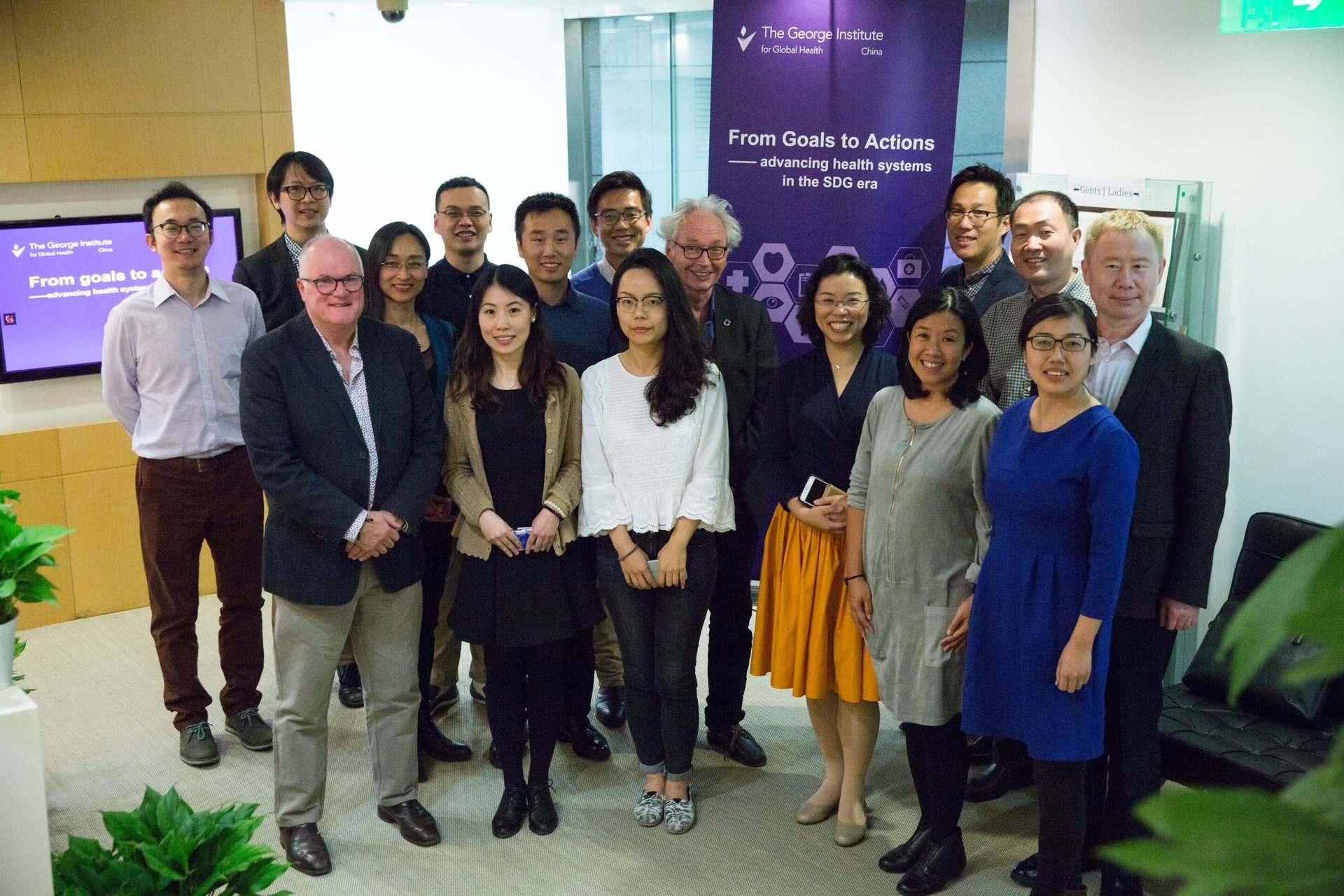
From Goals to Actions – Advancing Health Systems in an era of UN Sustainable Development Goals (SDG)
In a time of modern industrial revolution, a move towards more intelligent and efficient and effective models of care has become a consensus in the healthcare industry. SMARThealth, has not only brought about a near subversive change across the whole process of healthcare services, but has provides characteristics of application feasibility and value-add for clients and various stakeholders.
Within the ongoing SMARTHealth China project, The George Institute China hosted a scientific discussion meeting entitled 'From Goals to Actions – Advancing Health Systems in the SDG Era', to understand opportunities for developing a multidisciplinary health system platform in China. The meeting involved academic partners associated with the SMART Health project, which uses digital tools to improve health systems for people with chronic disease.
Professor Craig Anderson, Executive Director of The George Institute China opened the discussion with an overview of The George Institute China, and the institute’s 2025 Annual Plan soon to be formally launched.
The ongoing discussion was led by an international expert, Professor Goran Tomson, Professor of International Health Systems Research at The Karolinska Institutet, Stockholm, Sweden. He provided an overview of Universal Health Coverage (UHC) within the UN 2030 Agenda, including a case study of its operation in Sweden. He gave insights into the principles of fair allocation, and the context of the right to health under national law, and emphasized the importance of governance.
Next, various participants presented aspects of their own research and the potential impact of this on health systems. Professor Xiaoyun Liu, Deputy Director of China Centre for Health Development Studies, Peking University, discussed Measurement of UHC in China. He touched on the progress and current challenges regarding two barriers to UHC in China; namely, difficulties in seeking health services (access) and the high cost of getting health services (affordability). Based on the 19 indicators selected, the conclusions made about access were that while China has achieved high coverage of essential health services, there is still a shortage of qualified health workers, especially at primary healthcare levels and conversely an over-provision or use of tertiary services that needs to be addressed. In terms of affordability, there has been an increase in government investment and expansion of health insurance, but the financial burden of health care on families remains relatively high.
Professor Lijing Yan, Head of NCD Research, Global Health Research Center, Duke Kunshan University gave an overview a specific project - System-Integrated Technology-Enabled Model of Care Aiming to Improve the Health of Stroke Patients in Resource-Poor Settings in China (SINEMA Study). The study aims to build the capacity of primary healthcare (PHC) workers in the rural area, using mobile health technologies at the point of care, and to address critical health needs in a vulnerable community-dwelling patient group. The study could yield significant translational findings from implementation and scale-up of the intervention for the secondary prevention of stroke in other resource-limited settings.
Professor Stephen Jan, Head of Health Economics and Process Evaluation Program, The George Institute for Global Health, Australia, presented on the global experience of health financing for chronic diseases. He elaborated on how global health spending is predicted to increase significantly over coming years, and particularly on how the growing burden of NCDs could be assisted by the development of innovative schemes, such as the use of social impact bonds.
A/Professor Puhong Zhang, Associate Director of The George Institute China presented on strengthening the Chinese health system through mHealth-supported tiered medical service for people with diabetes. He showcased the SMARTDiabetes, ROADMAP and 1000-Days projects, to emphasize both technical and health system innovations could improve a tiered medical care.
Ms. Ninie Wang, CEO of a private organization, Pinetree Care, and Member of WHO Clinical Consortium on Healthy Ageing, gave her perspective about the role of the private health sector in strengthening the Chinese health system. She put forth the Life-course Health Guardian System, stressing upon China’s need for a person-centered, integrated health care system to give people more incentives for healthy behaviors, more efficient care utilization, and to realize the 4 ‘Rs’ of Health Services namely: right care, right patient, right time and right place.
Wrapping up the presentations, Dr. Maoyi Tian, Head of Digital Health Program, The George Institute China presented on the organization of PHC in low-middle income countries in the Asia-Pacific Region. He highlighted future directions for research on strengthening essential PHC service packages through meaningful use of health information systems, sustainable community engagement, and development of non-physician health worker workforce strategies.
Finally, all the participants had a lively discussion on their views over solutions to strengthening the Chinese primary care system, but all agreeing on the use of multidisciplinary teams and approaches.
Participants came from The National Centre for Chronic and Non-communicable Disease Control and Prevention of Chinese Center for Disease Control and Prevention, The Karolinska Institutet, Duke Kunshan University, Peking University, Pinetree Care, AI YOU Foundation, and colleagues from The George Institute of Global Health





